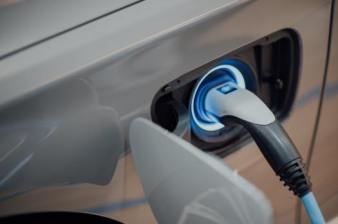Ferry Good News: First Electric Boat to Governors Island to Launch Next Year

How about Mr. Clean?
The Adams administration announced on Wednesday that it will initiate battery-powered ferry service between Lower Manhattan and Governors Island next year — the first major effort to clean up a form of transportation that comprises a major contributor to greenhouse gas emissions and other pollution.
And the city wants you to name the new $30-million boat:

This first vessel of its kind within New York Harbor will have a hybrid battery/diesel propulsion system that will start reducing pollution upon its launch in summer 2024 because pilots will be able to “toggle” between zero-emission battery power and the diesel backup, reducing emissions by 600 tons of carbon per year from the current 1,450 tons per year, according to the mayor’s office.
Eventually, the city intends to install a “rapid vessel charging” port which will allow the ferry to run 100 percent on battery power, reducing its emissions down almost to zero.
Mayor Adams and Trust for Governors Island President and CEO Clare Newman want New Yorkers to suggest names for the new 1,200-person-capacity boat starting today through May 25. (Entries can be submitted at the Governors Island website.) Worth noting: the new ferry replaces the diesel-powered Lt. Samuel S. Coursen, which was commissioned by the U.S. Army in 1956 and has been in continuous use since.
The City Hall press release on the boat quoted a number of local environmental dignitaries, but not Ben Furnas, who was the director of the Office of Climate and Sustainability under then-Mayor Bill de Blasio administration, which struggled to clean up its ferry fleet. On Wednesday, Furnas called the announcement “very nice” because “emissions from nautical vessels can be quite dirty on both climate and asthma-causing particulate point of view.”
“I’m particularly pleased to see the commitment to move forward with fast-charging shore power to get emissions even lower,” said Furnas, who is now the executive director of The 2030 Project: A Cornell Climate Initiative.
Ferry electrocution, he added, was part of the prior administration’s overall fleet electrification goals, but “was one of the more challenging aspects of that work, so it is very nice to see progress.”
That progress is not of insignificant importance. According to the New York League of Conservation Voters, nitrogen dioxide pollution near New York City ferry terminals are 50 percent above federal standards. On the plus side, the ferry system does transport thousands of passengers daily, some of whom might otherwise have driven. But ferry pollution is often glossed over; for example, an exhaustive 2021 report on cleaning up the air and water in the port of Seattle did not mention ferries at all.
Earlier this month, San Francisco took delivery of its own zero-emission ferry, Mass Transit reported. But that boat uses a hydrogen fuel cell. That boat is significantly slower than conventional ferries.




